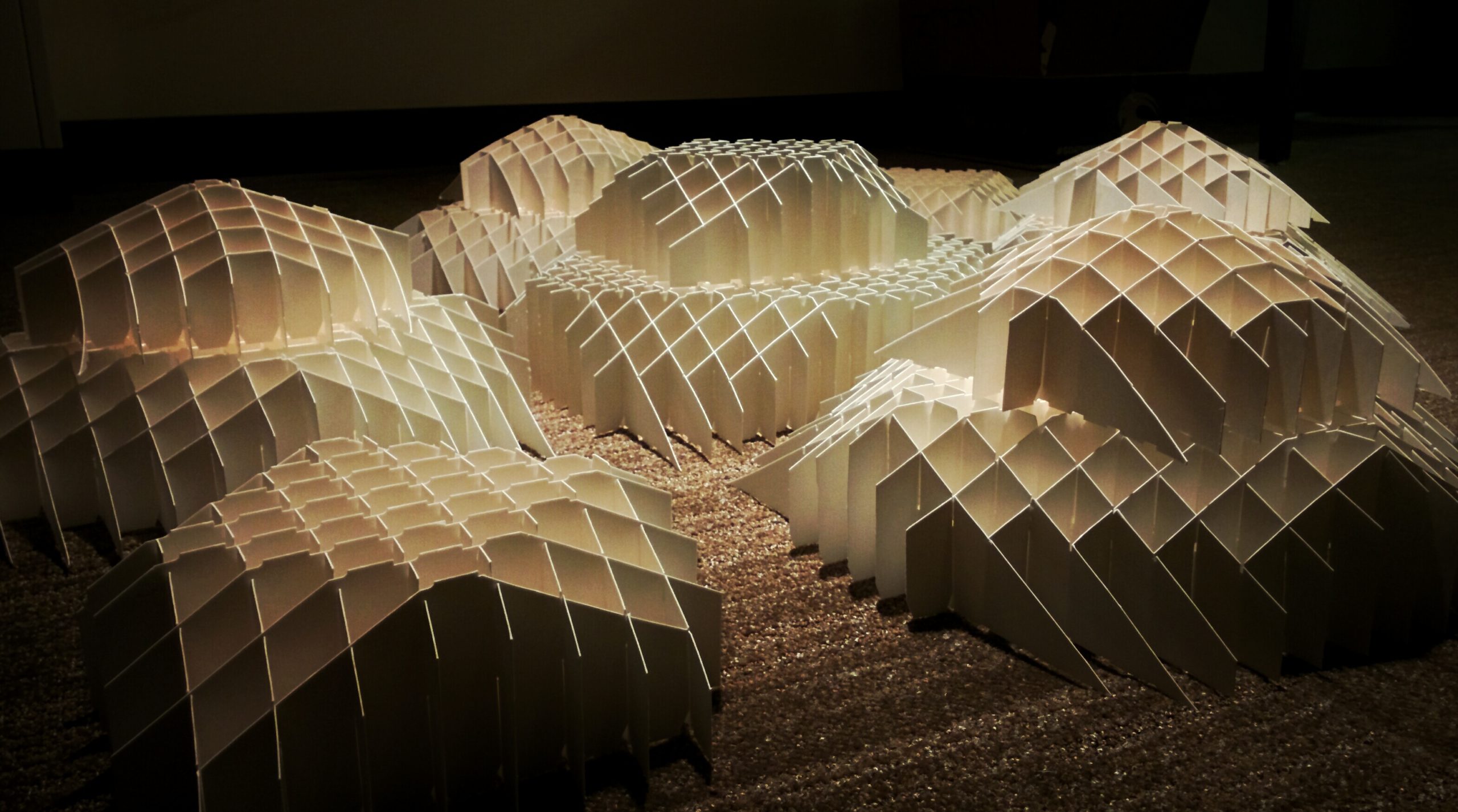2016 Grand Prize & People’s Choice Winner – Lawrence Chen

Paper Crystallography
The methods by which we do much of our scientific experimentation is oftentimes underappreciated. Powerful instruments and techniques help us to visualize and elucidate things that could not have been seen or understood by the human eye alone. One such method is X-ray crystallography, which as its name suggests, sends a beam of x-ray radiation through a crystallized substance, and creates a diffraction pattern on a surface opposite the light source. From that pattern, it is possible to calculate and re-construct the structure of the substance that has been crystallized. One of the earliest structures solved by X-ray crystallography was that of DNA, by Watson and Crick with the help of Franklin and Wilkins. Today, the method is applied to nearly everything that can be crystallized. Increasingly complex structures can be solved by crystallography and proteins have been a large focus of the method. The understanding that has come from the structures of solved proteins have helped to create new drugs, new antibiotics, and new treatments for a whole host of diseases. They have helped researchers to design new proteins, mimic protein functions, and identify mutations. The role of x-ray crystallography in the future of scientific research is both unknown and exciting. In this depiction of what the x-ray crystallography method is and how it works, observers are given a very minimalistic piece. There is a source of light, and cardstock. The gaps in the constructs demonstrate how the light passes through the crystal. If one were to place a surface very close to the suspended piece, it could be seen how the light interacts with the presence and absence of material. But with distance, that pattern diffuses and dissipates. On the ground, the diffraction pattern is a representation of what one might see: geometric patterns indicating where the light has struck the surface, and where it has not. The information in its arrangement isn’t immediately apparent – and so it requires some careful inspection. The materials were once a part of the packaging that held glass vials used in research labs, but have now been given a new life illustrating what might have happened to the samples it once held.
